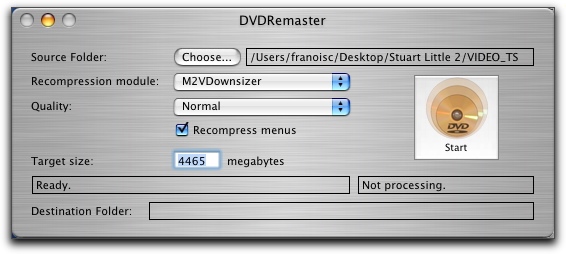

The newscast would compress to a much smaller size than the action sequence.

On the other hand, if a very fast action scene were being converted, in which things changed very quickly from one frame to the next, more intraframes would have to be encoded. If a newscast were being converted, a lot more predicted frames could be used because most of the scene is unaltered from one frame to the next. Using data from the closest surrounding frames, it uses interpolation, which is sort of like averaging, to calculate the position and color of each pixel.ĭepending on the type of scene being converted, the encoder will decide which types of frames to use. In order to display this type of frame, the player must have the information from the surrounding intraframe or predicted frames. This means that the frame contains only the data that relates to how the picture has changed from the previous frame.
DVD RECOMPRESS HOW TO
As a predicted frame, which contains just enough information to tell the DVD player how to display the frame based on the most recently displayed intraframe or predicted frame.This method of encoding provides the least compression. As an intraframe, which contains the complete image data for that frame.Each frame can be encoded in one of three ways:

It also uses information from other frames to reduce the overall size of the file. The compression uses some of the same technology as still image compression to eliminate redundant or irrelevant data.
DVD RECOMPRESS MOVIE
The MPEG encoder that creates the compressed movie file analyzes each frame and decides how to encode it. Because of the differences in frame rate and resolution, an MPEG movie needs to be formatted for either the NTSC or the PAL system. Other countries use Phase Alternating Line (PAL) format, which displays at 50 fields per second, but at a higher resolution (see How Video Formatting Works for details on these formats). NTSC displays a total of 30 frames per second but it does this in a sequence of 60 fields, each of which contains alternating lines of the picture. American and Japanese television uses a format called National Television Standards Committee (NTSC). This means that every second, there are 24 complete images displayed on the movie screen. A movie is usually filmed at a rate of 24 frames per second.


 0 kommentar(er)
0 kommentar(er)
